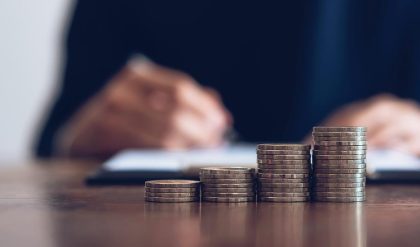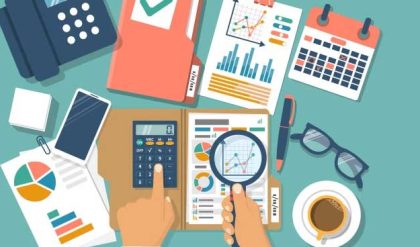Economic growth is an increase in the capacity of an economy to produce goods and services, compared from one period of time to another. It can be measured in nominal or real terms, the latter of which is adjusted for inflation. Traditionally, aggregate economic growth is measured in terms of gross national product (GNP) or gross domestic product (GDP), although alternative metrics are sometimes used.
BREAKING DOWN ‘Economic Growth’
In simplest terms, economic growth refers to an increase in aggregate productivity. Often, but not necessarily, aggregate gains in productivity correlate with increased average marginal productivity. This means the average laborer in a given economy becomes, on average, more productive. It is also possible to achieve aggregate economic growth without an increased average marginal productivity through extra immigration or higher birth rates.
Economic growth has a ripple effect. By expanding the economy, businesses start to see a surge in profits, which means stock prices also see growth. Companies can then raise more money in order to invest more, therefore adding more jobs to the labor force. That leads to an increase in incomes, inspiring consumers to open up their wallets and buy more.
Measured in Dollars, Not Goods and Services
A growing or more productive economy can make more goods and provide more services than before. However, some goods and services are considered more valuable than others. For example, a smartphone is considered more valuable than a pair of socks. Growth has to be measured in the value of goods and services, not only the quantity.
Another problem is not all individuals place the same value on the same goods and services. A heater is more valuable to a resident of Alaska, while an air conditioner is more valuable to a resident of Florida. Some people value steak more than fish, and vice versa. Because value is subjective, measuring for all individuals is very tricky.
The best approximation is to use the current market value; in the United States, this is measured in terms of U.S. dollars. Since a higher total produced market value is considered more valuable, higher economic growth is positively associated with an increased quality of life or standard of living.
Generating Economic Growth
There are only a few ways to generate economic growth. The first is a discovery of new or better economic resources. An example of this is the discovery of gasoline fuel; prior to the discovery of the energy-generating power of gasoline, the economic value of petroleum was relatively low. Gasoline became a “better” and more productive economic resource after this discovery.
Another way to generate economic growth is to grow the labor force. All else equal, more workers generate more economic goods and services. During the 19th century, a portion of the robust U.S. economic growth was due to a high influx of cheap, productive immigrant labor.
A third way to generate economic growth is to create superior technology or other capital goods. The rate of technical growth and capital growth is highly dependent on the rate of savings and investment, since savings and investment are necessary to engage in research and development.
The last method is increased specialization. This means laborers become more skilled at their crafts, raising their productivity through trial and error or simply more practice. Savings, investment and specialization are the most consistent and easily controlled methods.
There are also actions that the government can take in order to spur economic growth, and most governments try to do what they can to manage growth within the economy. In order to stimulate growth, the government can use expansive fiscal policy. This can include actions like increasing spending or cutting taxes. But if a country’s leaders spend too much, or keep cutting taxes, it can lead to a deficit.





